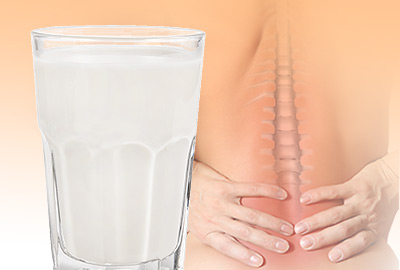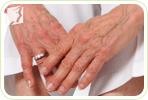
Osteoporosis, a degenerative bone disease, is a condition in which a person's bones become more porous, increasing the risk of breaks and fractures. Unfortunately, because low estrogen levels are one of the primary causes of osteoporosis, there is an increased risk of osteoporosis. However, there are other lifestyle factors which may contribute to postmenopausal osteoporosis. Read on to learn more about postmenopausal osteoporosis, its symptoms, and causes.
What Is Osteoporosis?
Osteoporosis, which means “porous bones”, is a disease in which the bones are at an increased risk of fracture. In osteoporosis, bones have a reduced bone mineral density, and the protein composition in the bones is altered. There are two types of osteoporosis: postmenopausal osteoporosis and senile osteoporosis, which occurs in both men and women after the age of seventy-five.
Symptoms of Osteoporosis
Osteoporosis has few visible symptoms, as the main consequence of osteoporosis is the increased risk of bone fractures. Symptoms are usually only detected late in the onset of the disease. They include:

- Fractured bones
- Bone, neck, spine, and lower back pain
- Broken bones
- Brittle fingernails
- Spinal deformities
Causes of Osteoporosis
There are hormonal and non-hormonal causes of osteoporosis. Postmenopausal osteoporosis is linked to low estrogen levels in the body, while non-hormonal, external factors cause osteoporosis.
Hormonal causes of osteoporosis occur when estrogen levels in the body drop, like during menopause. Estrogen is needed to absorb calcium. Without it, a sufficient level of calcium does not enter the bone, bone mass is not replenished, and it becomes weak and brittle.
Non-hormonal causes of osteoporosis include:
Medications. Certain medications impact the bone's ability to rebuild themselves. These include medications for thyroid problems and certain anti-seizure medications.
- Genetic factors. Your genes may play a role in your susceptibility of osteoporosis. If a member from a previous generation suffered from osteoporosis, then you are more likely to suffer from osteoporosis as you age.
Osteoporosis Triggers
As well as these external factors, there are a number of lifestyle habits that can make you more likely to develop osteoporosis. These include:

Alcohol abuse. Drinking heavily can reduce bone formation
Smoking. Smoking can prevent estrogen from protecting the bones
- Inactive lifestyle. People who are inactive run a higher risk of osteoporosis
Click on the link below to learn more about how to prevent osteoporosis during postmenopause.
Sources
- American Physical Therapy Association.(n.d)."What You Need to Know about Osteoporosis.". Retrieved from www.apta.org.
- Cleveland Clinic.(n.d9."Menopause and Osteoporosis.".Retrieved from http://my.clevelandclinic.org.
- National Osteoporosis Foundation.(n.d)."Prevention: Who's at Risk.".Retrieved from www.nof.org.
- New York State Department of Health.(n.d)."Calcium and Healthy Bones." .Retrieved from www.health.state.ny.us.


